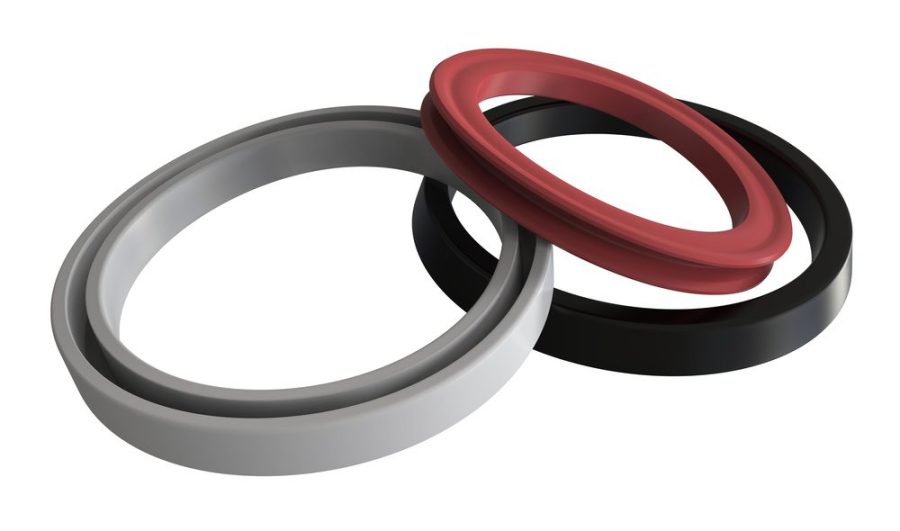O-rings are small but essential components used in many machines and devices. They are circular rubber seals that prevent liquids and gases from leaking out of joints and connections. Imagine a simple water faucet; inside, there might be an O-ring keeping the water from dripping when the tap is closed. Now, think about more complex systems like car engines, airplanes, or industrial machinery they all rely on O-rings to function properly.
When it comes to high-temperature applications, not all O-rings are created equal. Heat can cause some materials to melt, crack, or lose their shape, leading to leaks and failures.
What Makes High-Temperature Applications Challenging?
High-temperature environments are tough on materials. Heat can:
- Cause Expansion
Materials may expand when heated, leading to gaps where leaks can occur.
- Degrade Materials
Some rubbers and plastics break down at high temperatures, losing their strength and flexibility.
- Affect Seal Integrity
The ability of an O-ring to seal properly can diminish if it can’t handle the heat.
In industries like aerospace, automotive, oil and gas, and manufacturing, equipment often operates under high temperatures. Failure of an O-ring in these settings can lead to serious problems, including equipment damage, safety hazards, and costly downtime.
Why Choose Parker O-Rings for High Temperatures?
- High-Quality Materials
Parker uses advanced materials specifically designed for high-temperature applications. Some of these materials include:
- Viton® (Fluorocarbon): Resistant to heat up to 400°F (204°C), it also offers excellent resistance to oils and chemicals.
- FFKM (Perfluoroelastomer): Can handle temperatures up to 600°F (316°C), making it suitable for the most extreme conditions.
- Silicone: Good for temperatures up to 450°F (232°C) and remains flexible in the cold.
These materials ensure that the O-rings maintain their shape, strength, and sealing ability even when exposed to high heat.
- Precision Manufacturing
Parker is known for its precise manufacturing processes. Their O-rings are made to exact specifications, ensuring a perfect fit every time. This precision reduces the risk of leaks and failures.
For example, in a car engine, O-rings seal various components where oil flows. If an O-ring doesn’t fit perfectly, oil can leak out, leading to engine damage. Parker’s precision-made O-rings help prevent such issues.
- Wide Range of Sizes and Styles
Parker offers a vast selection of O-rings in different sizes, thicknesses, and styles. Whether you need a tiny O-ring for a small appliance or a large one for industrial machinery, Parker has options suitable for high-temperature environments.
This variety means you can find the right O-ring for your specific needs without compromising on quality or performance.
- Expert Support and Testing
Parker provides technical support to help customers choose the right O-ring material and size for their application. They also conduct rigorous testing to ensure their O-rings perform well under high temperatures.
For instance, in the aerospace industry, components must meet strict safety standards. Parker’s expertise and testing give engineers confidence that their O-rings will perform reliably.
Benefits
- Reliability: Reduces the risk of leaks and equipment failure.
- Longevity: Durable materials last longer, reducing the need for frequent replacements.
- Safety: Prevents leaks that could lead to dangerous situations, such as fires or explosions in certain environments.
- Cost Savings: Fewer failures and replacements mean lower maintenance costs over time.
Real-World Applications
- Automotive Industry
In cars, high temperatures occur in engines and exhaust systems. Parker O-rings are used in fuel injectors, thermostats, and transmission systems to prevent leaks despite the heat.
- Aerospace
Airplanes experience extreme temperatures, especially in engines and hydraulic systems. Parker O-rings ensure these critical components remain sealed, contributing to the safety and reliability of flights.
- Oil and Gas Industry
Equipment used in drilling and refining must withstand high temperatures and harsh chemicals. Parker’s high-temperature O-rings prevent leaks in valves, pumps, and pipelines.
Choosing the Right Parker O-Ring
When selecting an O-ring for high-temperature applications, consider the following:
- Temperature Range
Make sure the material can handle the maximum temperature it will be exposed to.
- Chemical Compatibility
If the O-ring will come into contact with oils, fuels, or chemicals, ensure the material is resistant.
- Size and Fit
Use precise measurements to choose the correct size for a tight seal.
- Pressure Requirements
In high-pressure systems, the O-ring must withstand the force without deforming.
Parker provides detailed catalogs and technical support to help customers make the right choice.
Final Thoughts
Parker O-rings stand out in high-temperature applications due to their advanced materials, precise manufacturing, and proven reliability. They enhance safety, extend equipment lifespan, and offer cost savings by preventing leaks and failures. Thank visiting itflexnews.com



